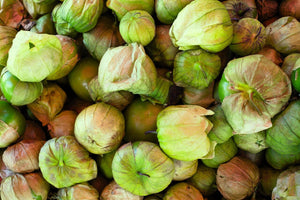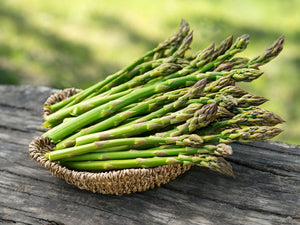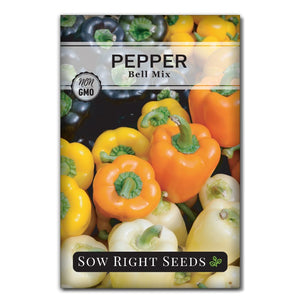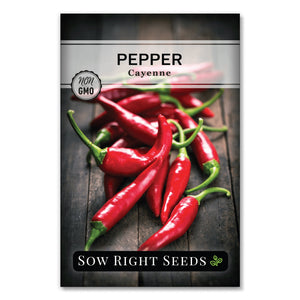Some Like it Hot! 10 Hot Peppers Anyone Can Grow in a Home Garden
PeppersHow hot is it? That’s the most crucial question gardeners ask when choosing which hot peppers to grow. Some like peppers as hot as possible, and others want to stay a little more on the mild side.
Growing your own hot peppers is ideal because a wide variety of tastes and temperatures are available from seed. And gardeners who love adding spicy heat to their food find growing peppers to be relatively easy. Pepper plants love the warm temperatures of summer, and heirloom varieties are reliable producers. We’ve got the hot pepper seeds you need to grow in your garden.

Do you know your Scoville scale?
Start talking hot peppers with other gardeners, and it quickly becomes a competition.
What’s the hottest pepper you’ve grown? But have you tried an Orange Habanero? Hot peppers can bring out the competitive side of gardeners. So, if you’re talking hot peppers, you need to understand the Scoville scale.
The Scoville scale is used to rate the heat of hot peppers. It measures the amount of the chemical compound capsaicin. Capsaicin is what causes the burning sensation when eating hot peppers. It doesn’t have a flavor but binds with your taste buds, making them think you’re literally on fire. On the Scoville scale, the amount of capsaicin is listed as SHU for Scoville Heat Units. Bell peppers don’t have capsaicin, so they aren’t on the Scoville scale. To be considered a “hot” pepper, it has to have at least 100 SHU.
The range of hot peppers goes from mild to extremely hot based on Scoville Heat Units.
Mild = 100 to 2,500
Medium = 2,500 to 30,000
Hot = 30,000 to 100,000
Extra Hot = 100,000 to 300,000
Extremely Hot = anything above 300,000
Heirloom Hot Pepper Varieties from Mild to Extremely Hot
Sweet Banana Pepper - Mild
Poblano - Mild
Anaheim - Mild
Cubanelle - Mild
Jalapeño - Medium
Serrano - Medium
Cayenne - Hot
Mini White Habanero - Extra Hot
Habanero Orange - Extra Hot
Habanero Red - Extra Hot to Extremely Hot
Heirloom Hot Peppers to Grow From Seed
Sweet Banana Pepper
Sweet Banana peppers are a favorite for their mild flavor. These long yellow peppers mature into brilliant orange-red. Sweet Banana peppers are often used for pickling. They are also a nice touch of heat on sandwiches, salads, and omelets. SHU 0 - 500
Poblano Pepper
Poblano peppers are most often picked when dark green and stuffed for chile rellenos. But when fully ripened, they have a rust-red color. Dried poblanos are called ancho chiles and are ground for flavorful chile powder. These heart-shaped peppers are mildly spicy and grow 3 to 6 inches. SHU 1,000 - 2,000
Anaheim Pepper
Anaheim peppers are mild to medium-hot chili pepper that is perfect for stuffing. This pepper grows on upright bushes 24" tall. Anaheim peppers can be harvested while green for a milder flavor or allowed to ripen to a deep red for a spicier taste. 75-80 days to maturity. SHU 500 to 2,500
Cubanelle Pepper
Cubanelle peppers are sweet and mild. These colorful peppers change from green to red when the peppers are fully mature at 4-6" long. Full of flavor and with a lower water content than bell peppers, Cubanelle peppers are ideal for frying and sautéing. SHU 0-1,000
Jalapeño Pepper
Jalapeño peppers have a perfect balance of heat and flavor. Their heat can range from just above mild to medium. Jalapeños are zesty and delicious as an addition to your favorite Mexican dishes. SHU 2,500 to 8,000
Serrano Pepper
Serrano peppers are a fiery addition to salsa and Mexican dishes. These long and slender peppers will be at their hottest when they are bright red. SHU 10,000 to 25,000
Cayenne Pepper
Cayenne peppers are very popular for adding heat to dishes without overpowering them. The long and thin-walled red peppers are great for fresh eating or drying. This heavy-producing pepper plant is perfect for container gardening. SHU 30,000 to 50,000
Mini White Habanero Pepper
Mini White Habanero pepper is a Peruvian habanero. This heirloom variety is a popular ornamental plant with unusual creamy white peppers. Like other habaneros, this miniature variety has a fruity flavor and a scorching heat profile. SHU 100,000 to 350,000
Habanero Orange Pepper
Habanero Orange pepper is a delicious hot pepper that originated in the Yucatan thousands of years ago. The extra-hot heat pairs well with its citrusy, tropical flavor, adding a unique twist to dishes and sauces. SHU 100,000 to 350,000
Habanero Red Pepper
Habanero Red pepper is one of the world's hottest peppers. The peppers themselves are small, and the plants are compact and grow only a foot tall. These are excellent for getting the most heat for your garden space. SHU 100,000 to 350,000
Can I make my hot peppers hotter?
The heat of hot peppers is mostly plant genetics, but growing conditions also influence it. Each hot pepper variety has a range on the Scoville scale based on how much capsicum it produces. The range varies because environmental factors also play a role in how hot the peppers will be.
So, to get peppers to the hotter part of the scale, gardeners can try several different things.
1 - Stress to the plant at just the right time will result in spicier peppers. The right time to stress a hot pepper plant is when the fruit is set and starting to grow. You can reduce watering to stress the plant, and it will produce hotter peppers. Just be careful not to limit water so much that the plant dies.
2 - Harvest when the fruit stops growing. Once they are at their full size, they are at their full heat. Unlike sweet bell peppers, which become sweeter as they change color, hot peppers become hotter. For example, a mild Anaheim pepper will become hotter when it ripens to a deep red.
3 - Grow peppers in a hot climate with warm nights. Peppers really love the heat, and it’s almost like they gather up the sun’s rays to make your tongue burn.
Where can I grow hot peppers?
Pepper plants need at least 8 hours of full sun daily. So choose a sunny location. They also thrive in the heat. Plant them outdoors when temperatures are above 70ºF.
Can I grow hot peppers in pots?
Hot peppers are an excellent choice for container gardening. They generally have small, compact growth, and the prolific production of peppers results in a beautiful plant.
Hot Pepper Facts and Myths
It’s not the pepper seeds that are burning your tongue. The hottest part of the pepper is the pith. The pith is the white part that holds the seeds. Cut this part out if you want a slightly milder pepper.
Your mouth may not literally be on fire, but it sure feels like it! This is because the capsaicin molecule in peppers binds with the pain receptors in your mouth. This creates that burning sensation that signals your brain to put out the fire.
When your mouth is on fire, milk helps cool it down. The protein in milk breaks up the bond of capsaicin on your nerves. So keep a glass of whole milk nearby for some cool relief.
Wear gloves when working with hot peppers, and never get the residue in your eyes. And don’t ever scratch any part of your face after handling hot peppers. Especially your eyes and nose.
Do you like it hot? If you love adding heat to your cooking, it’s time to start growing heirloom hot peppers in your home garden. There are many ways to use hot peppers and add spice to your everyday meals. From spicy Mac n Cheese, salsa, chili, and jalapeño poppers, there’s a chili pepper that’s perfect for your kitchen garden. Our reliable producers from heirloom seeds will surely hit the spot.
For seed-starting tips, read our Pepper Seed Starting Guide in our Planter’s Library.
Need the soil and pots to get started with a variety of hot peppers? Try our Mixed Pepper Starter Kit for everything you need to start growing hot peppers.
But if just thinking of eating hot pepper makes you break out in a sweat, try some colorful sweet peppers instead. We've got something for every pepper gardener.
Happy Growing









Leave a comment